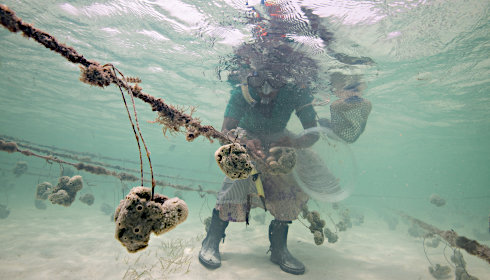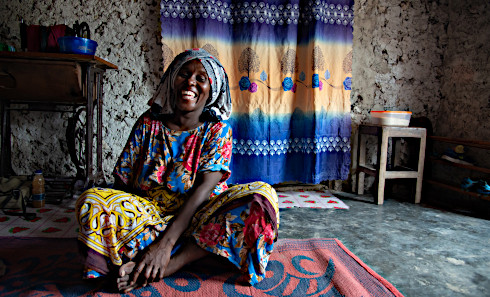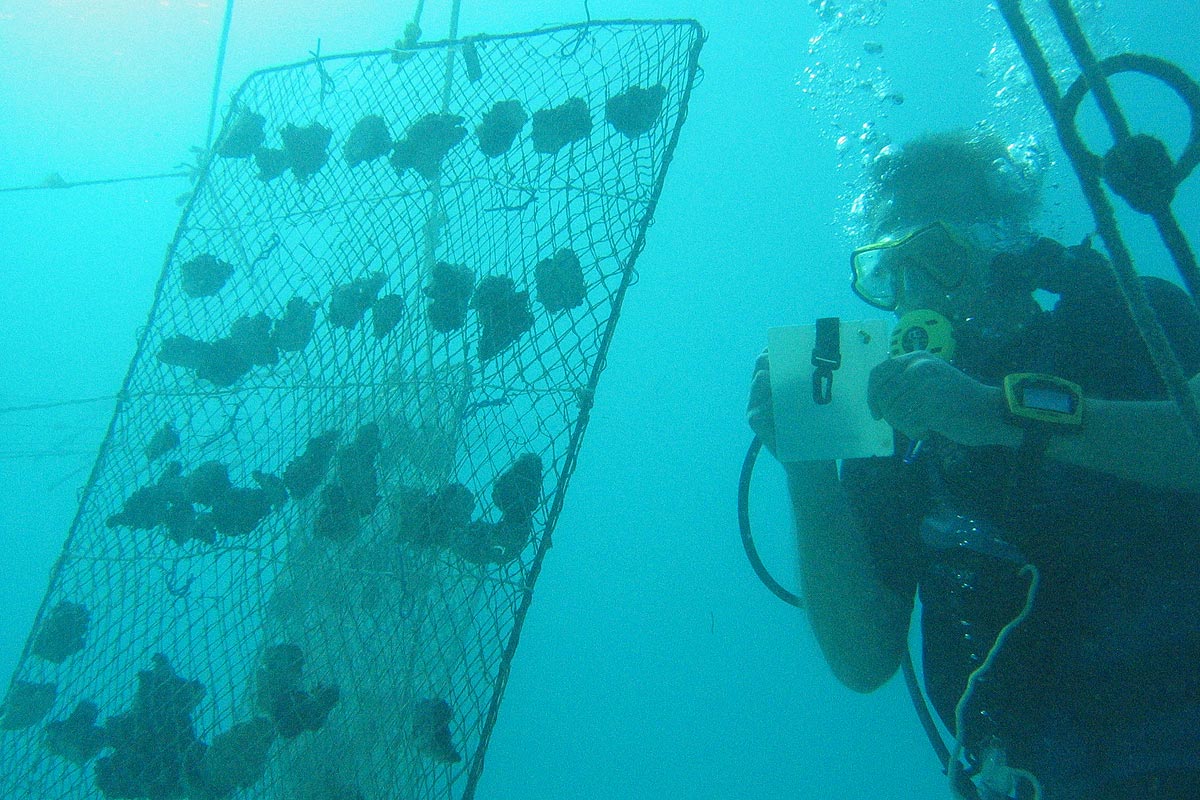The sponge production increases
09.02.2020
Harvesting is not only increased because there are a few additional sponge farms compared to last year. The production itself is increasing. We are pleased to note that the older sponge farms and the women farmers who have been with us for a longer period of time, are clearly producing more than in previous years. There are several reasons for this.
Older farms have on average more older sponges. These in turn are larger than those of the farmers who have only recently become independent. In older farms, more sponges are therefore ready for harvest every month. In addition, natural selection has taken place on the older farms. Susceptible specimens have died over time. The strong, well growing ones have survived. This natural selection was still supported by the farmers. Bad sponges are continuously removed. In addition, of the original three different subspecies, we now only use the species that produces the best product.

Kadija in her farm (by Jennifer Adler Owen)
In addition, all the "seedlings" we gave to the farmers to compensate for the losses during last year's starfish epidemic are larger than those we were able to supply earlier. This is because the broodstock on the seedling farm is larger and allows the production of larger seedlings. The new apprentices benefit from this: at the beginning of their training we supply them with a few hundred very large seedlings for their farm, so that they can harvest and sell more quickly at the end of their one-year training period.
And last but not least, the production figures clearly show the quality of work of the individual farmer. There are some who have been with us since the beginning, but work unsystematically and less frequently. They harvest only half as much as their efficient and very ambitious colleagues.

At home with Shemsa
(by Jennifer Adler Owen)


